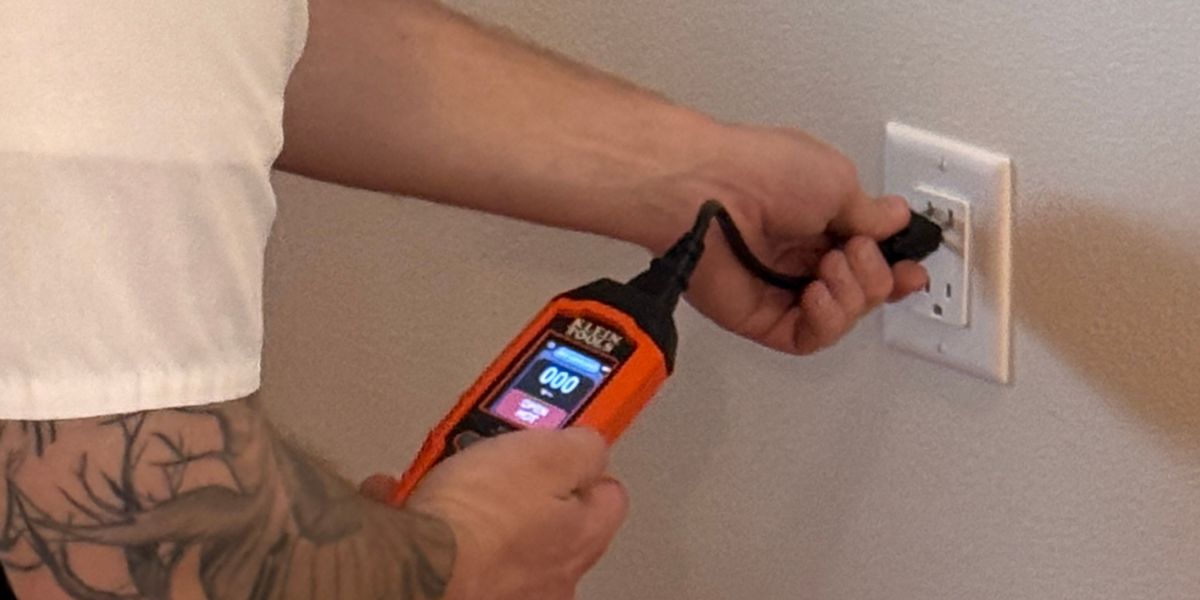What Is Voltage Loss? (And Why It’s a Problem for Your Home)
July 15th, 2025
5 min read

An electrician just told you that your home has voltage loss, and you’re probably thinking… “Umm, what??”
Or maybe you haven’t heard the term yet… but you’ve noticed your electrical system just isn’t acting quite right.
The lights flicker. Outlets feel weak. Your vacuum runs better in one room than in another. Something feels off, but it’s hard to explain and even harder to know what to do about it.
It’s frustrating.
Maybe even a little unsettling.
You start to wonder: Is something seriously wrong? Is this going to get worse? Is my home still safe?
You’re not imagining it.
At Integra Electrical, we find signs of voltage loss in homes every single day. Whether it’s an older house with original wiring or a newer build with overlooked shortcuts, we’re here to explain what’s going on and what it means for you, in plain English.
Before the end of this article, you’ll know:
- What voltage loss is (and how it works behind your walls)
- The 3 Major Concerns with Voltage Loss
- The most frequently asked questions about voltage loss
What Is Voltage Loss?
Voltage loss is a measurement of how much power is lost as electricity travels from the source to the load. In a home, that means from your electrical panel to whatever you’ve plugged in, like a light, TV, or appliance.
Still, sounds a little technical? Think of it like this:
Your electrical system is like a garden hose. The panel is the water source, the wiring is the hose, and the outlet or device is the sprayer at the end. If your hose is too long, too narrow, or full of tiny holes, not enough water will reach the sprayer, even though the water source is working just fine.
It’s the same with electricity. If your wires are too small, damaged, or overloaded, the power weakens by the time it reaches the outlet. That’s voltage loss.

And here’s the thing: some voltage loss is completely normal. According to the National Electrical Code (NEC), all wire has resistance, which means you’re going to lose a little voltage in every circuit. The smaller the wire, the higher the resistance. The bigger the wire, the lower the resistance and the easier it is for electricity to flow.
That’s why the National Fire Protection Association (NFPA) recommends that no more than 5% of your voltage should be lost between the source and the load. Anything more than that, and you’re outside the safe range, which is when problems start to show up.
Voltage loss is also a bit like high blood pressure. The system is working overtime to push electricity through, which can cause overheating, wear and tear, and eventually bigger failures. It’s not just inefficient, it can be a sign that something deeper in the system isn’t quite right.
The 3 Major Concerns with Voltage Loss
Voltage loss isn’t just an inconvenience, it’s a signal that something in your home’s electrical system isn’t working the way it should. And while the symptoms might seem small at first (a dim light here, a slow charger there), the long-term effects can cost you time, money, and peace of mind.
Below are the three biggest issues we see when voltage loss is left unaddressed, and why they matter more than most homeowners realize.
1. It Shortens the Life of What You Plug In
When voltage loss is present, your devices and appliances aren’t getting the full power they need to run properly. That means they have to work harder to do their job, and over time, that extra strain adds up.
You might notice:
- Chargers getting hot or taking forever to charge your phone
- Lights that burn out faster than they should
- TVs, gaming systems, or computers acting glitchy
- Appliances that make unusual noises or seem slower than usual
It’s like trying to run a machine on half the fuel it needs or trying to do a full day’s work without eating. Things might “function,” but they’re being starved of the resources they need to perform well. Eventually, they break down.
Even though the issue is behind the wall, the damage shows up in the things you use every day. And the result? You end up replacing perfectly good devices years earlier than you should have to, which can cost you well, shoot, thousands if you’re plugging in expensive equipment like computers or TVs.
2. It Creates Heat Where You Can’t See It
If electricity isn’t reaching your outlet with the strength it should, that energy doesn’t just disappear; it has to go somewhere. In the case of voltage loss, that “somewhere” is often inside your walls, at the connections, or in the panel itself.
Think back to the hose analogy:
If water isn’t making it to the sprayer at full pressure, but the spigot is still on full blast, then something in the hose is restricting the flow. In an electrical system, that restriction shows up as resistance, and instead of building pressure, the energy is lost as heat. So by the time the power reaches the outlet, it’s more of a trickle than a steady, reliable stream.
It’s the same with electricity.
The panel (your water source) is still sending full voltage. But if the outlet (sprayer) isn’t receiving it, that energy is building up along the way, often at loose connections, undersized wires, or junction boxes. That buildup causes excess heat, and over time, heat is one of the biggest threats to electrical safety.
Heat buildup can happen in Wall outlets, Switch boxes, Junction boxes, Circuit breakers, or panels. The worst part? You can’t feel or see it. In many cases, it takes a thermal imaging camera to detect the heat before it becomes a real fire hazard.
3. It’s a Symptom of Something Bigger
Voltage loss is rarely the root problem; it’s usually a sign that something else is going wrong behind the scenes.
Some of the bigger issues, voltage loss, might be pointing to:
- Outdated or undersized wiring that can’t handle modern power needs
- Loose or corroded connections that are starting to break down
- Overloaded circuits pull more power than they were designed for
- DIY wiring mistakes from past owners or contractors
- Faulty junctions or splices hiding behind walls or ceilings
- New additions or remodels that didn’t account for increased load
That’s why we never treat voltage loss as a one-time fix. At Integra, we follow the signs and test the whole system, from the panel to the farthest outlet, to find the true cause. Because treating the symptom without solving the real issue just means the problem will come back.
Next Steps
Voltage loss may be invisible, but its effects are very real, from worn-out appliances to hidden heat buildup and deeper system issues. If your electrical system isn’t acting quite right, it’s worth listening to what your home might be trying to tell you.
At Integra Electrical, we don’t guess, we test. Our full home diagnostic pinpoints exactly where voltage loss is happening and why, so you can get real answers without the runaround.
And if we uncover something that needs attention, we’ll explain what’s going on and give you clear, customized options, no pressure, no upsells.
Curious what electrical work might cost if voltage loss is affecting your home?
Download our Free Price Guide to get a realistic sense of project costs, no surprises, just transparency.

Frequently Asked Questions About Voltage Loss
How can I tell if I have voltage loss?
Look for flickering lights, outlets that feel “weak,” or devices that charge slowly or run inconsistently, especially in certain rooms.
Is voltage loss dangerous?
It can be. When power builds up where it shouldn’t, it creates heat, which can lead to fire hazards or damage to your system.
Can I fix voltage loss myself?
Not safely. Voltage loss requires professional testing tools and know-how. Trying to DIY it could make the problem worse or more dangerous.
Could this be happening in a newer home?
Yes. We see it in newer homes all the time, especially if corners were cut during construction or remodeling.
How do you test for voltage loss?
We use a combination of voltage drop testing, load simulation, and thermal imaging to find exactly where power is being lost and why.
Dyllan has over a year of experience in the electrical field and is passionate about helping his team and customers succeed. He’s motivated by seeing everyone grow and thrive together. Outside of work, he’s a husband and proud father of two who loves spending time with his kids. Dyllan enjoys serving homeowners and building meaningful connections through every interaction.
Topics:



